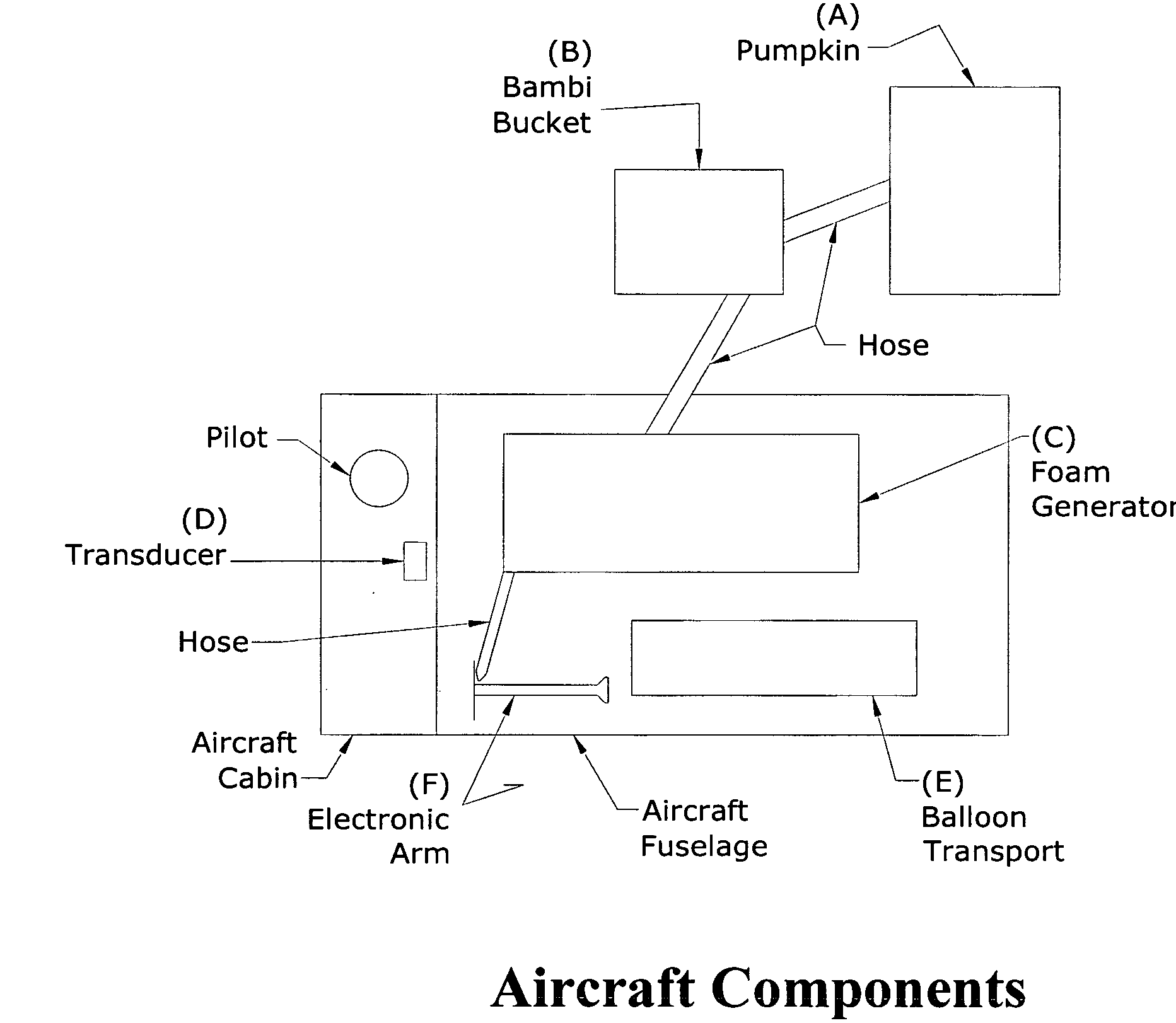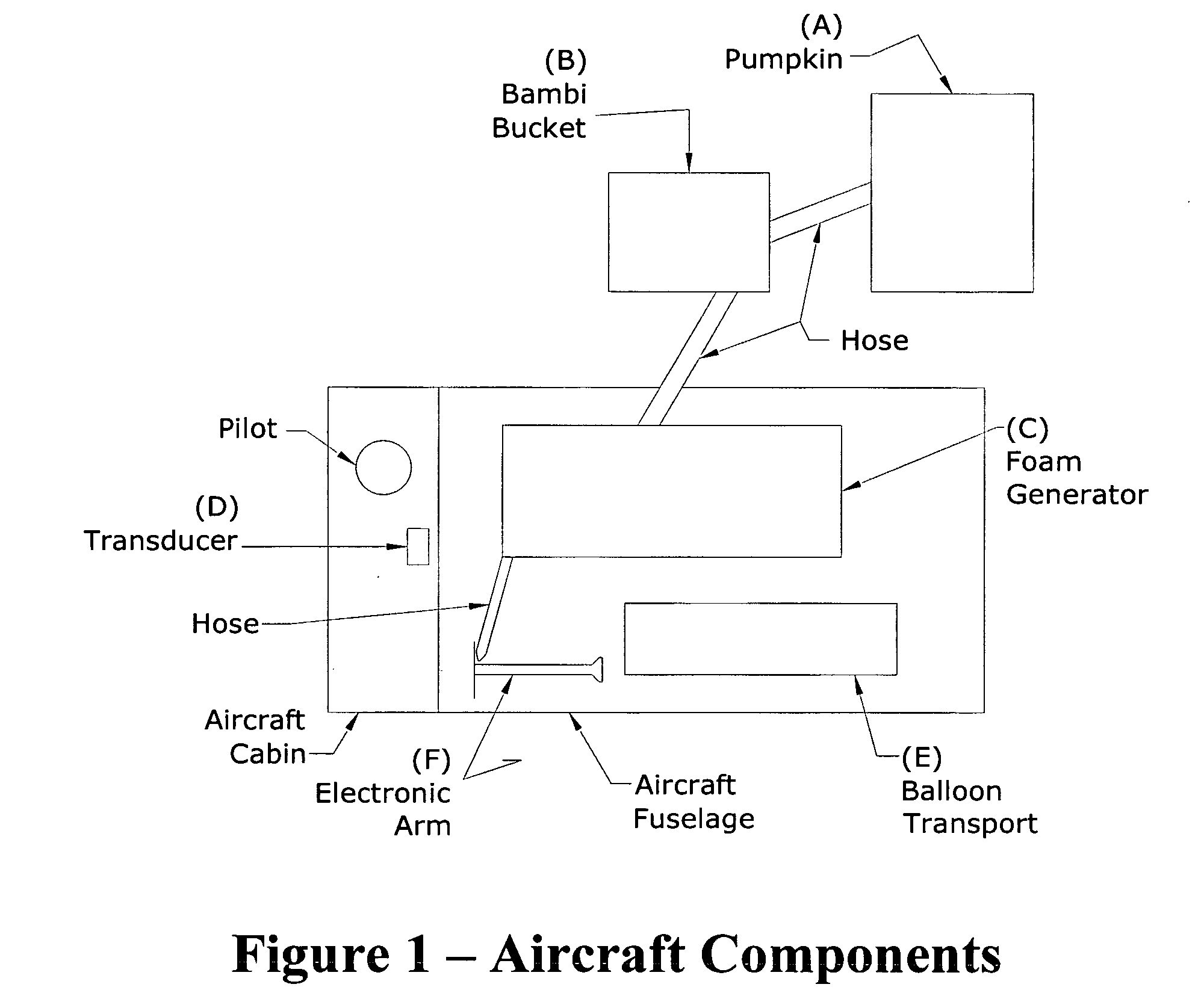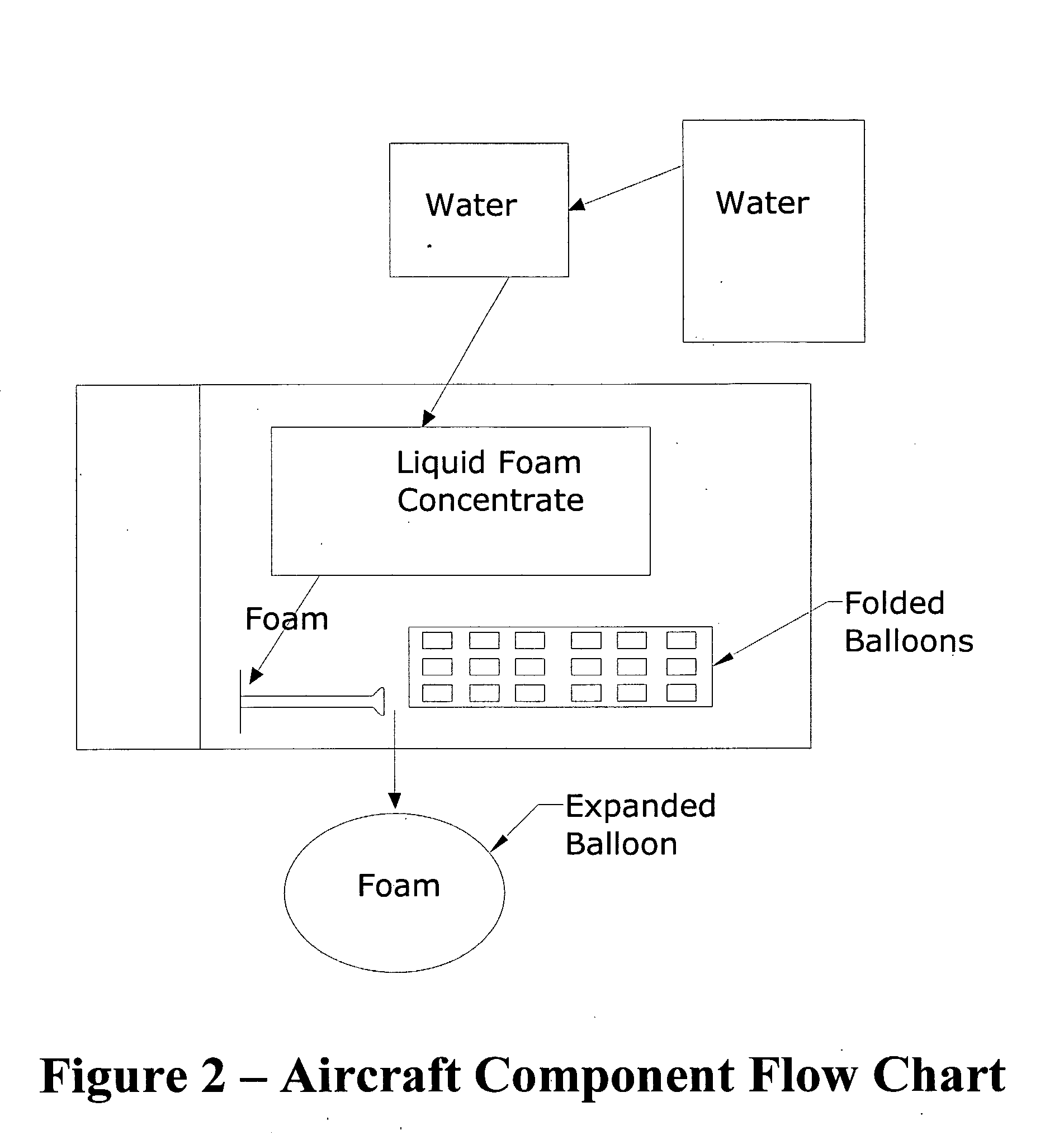New technique for fire fighting-large scale open fires
a firefighting and large-scale technology, applied in fire rescue and other directions, can solve the problems of limited amount of water or chemical retardants, limited methods, and human and animal deaths, and achieve the effect of improving the aerial firefighting capability, accurate delivery of that material, and maximizing the volume of fire retardant material
- Summary
- Abstract
- Description
- Claims
- Application Information
AI Technical Summary
Benefits of technology
Problems solved by technology
Method used
Image
Examples
Embodiment Construction
[0011]The invention is a self-contained, fully integrated mechanism by which an aircraft pilot can, while airborne, convert a relatively small volume of water into a relatively large volume of fire retardant foam in situ, inject that foam into balloon-like receptacles, and accurately deliver those receptacles under even the most extreme conditions where needed in order to extinguish an open-area fire.
[0012]This result is achieved by pumping water from an airborne source through a compressed-air foam generator housed in the aircraft's fuselage. The aerated foam is then disbursed from the aircraft by rapidly injecting it into balloon-like receptacles that are delivered automatically and accurately to the target fire by means of a mechanical arm.
[0013]The preferred embodiment of the invention begins with a water source exterior to the firefighting aircraft, which can either be terrestrial (a lake, reservoir, tank or fire truck, for but a few examples) or airborne (such as a tanker airc...
PUM
 Login to View More
Login to View More Abstract
Description
Claims
Application Information
 Login to View More
Login to View More - R&D
- Intellectual Property
- Life Sciences
- Materials
- Tech Scout
- Unparalleled Data Quality
- Higher Quality Content
- 60% Fewer Hallucinations
Browse by: Latest US Patents, China's latest patents, Technical Efficacy Thesaurus, Application Domain, Technology Topic, Popular Technical Reports.
© 2025 PatSnap. All rights reserved.Legal|Privacy policy|Modern Slavery Act Transparency Statement|Sitemap|About US| Contact US: help@patsnap.com



